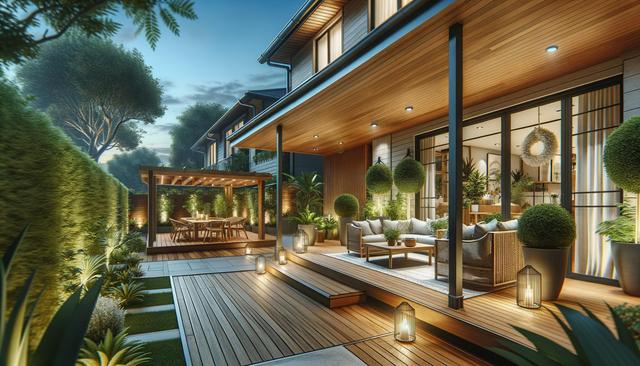Planning Your Patio Renovation
Before diving into an outdoor patio renovation, it’s essential to start with a clear plan. Assessing your current space and determining how you want to use it will help guide your decisions. Consider the size of your yard, the amount of sunlight it gets, and the kind of activities you’d like to accommodate—be it dining, lounging, gardening, or entertaining. A good renovation plan balances functionality with aesthetics and takes your lifestyle into account.
Start by sketching a rough layout of your desired patio design. Think about zones for different uses, such as:
- A dining area with a table and chairs
- A lounge space with comfortable seating
- Garden beds or planters for greenery
- Pathways for easy navigation
Having a layout helps you visualize the transformation and allows you to make smarter decisions when choosing materials and furnishings. Don’t forget to take measurements and account for existing features like trees, fences, or slopes in the terrain.
Choosing the Right Materials
The materials you choose will have a significant impact on the overall look, feel, and maintenance of your patio. Common options include stone, concrete, wood, and composite decking. Each has its own advantages, so consider your climate, budget, and long-term maintenance preferences when making a selection.
Here are a few popular material choices for outdoor patios:
- Natural stone – Offers a timeless look and excellent durability, though it can be more expensive.
- Stamped concrete – Provides a decorative touch with various patterns and is relatively low-maintenance.
- Wood decking – Brings warmth and character but may require regular sealing or staining.
- Composite materials – A practical alternative to wood, often resistant to moisture and insects.
Incorporating a mix of materials can add depth and interest to your patio design. For example, combining stone pavers with wooden accents creates a visually appealing contrast while meeting functional needs.
Incorporating Outdoor Furniture and Decor
Furnishing your patio is where the space truly comes to life. Choose furniture that suits your intended use and complements your design aesthetic. Whether you lean toward modern minimalism or rustic charm, there are plenty of options available to match your style.
Consider these elements when selecting outdoor furniture:
- Weather-resistant materials such as metal, teak, or resin wicker
- Cushions with covers made from UV-resistant and water-repellent fabrics
- Modular furniture pieces that can be rearranged to suit different occasions
Beyond furniture, decorative touches can enhance your patio’s ambiance. String lights, lanterns, or solar-powered path lights can create a cozy atmosphere. Outdoor rugs help define seating areas and add a pop of color or texture. Adding planters with seasonal flowers or herbs can bring life and fragrance to the space.
Adding Functional Features
Incorporating functional features into your patio renovation ensures the space remains comfortable and usable throughout the year. Think about ways to improve comfort, convenience, and accessibility.
Some popular functional additions include:
- Shade structures such as pergolas, retractable awnings, or large umbrellas
- Heating options like fire pits or patio heaters to extend outdoor use into cooler months
- Outdoor kitchens or built-in grills for seamless entertaining
- Water features like fountains or small ponds for a calming effect
These enhancements not only improve the usability of your patio but can also increase the overall value of your home. When planning these features, it’s important to consider utility access, safety, and compliance with local building codes.
Maintaining Your Renovated Patio
Once your patio renovation is complete, regular maintenance will help preserve its appearance and functionality. Different materials and features will have varying care requirements, so it’s helpful to establish a simple routine.
Here are some general maintenance tips:
- Sweep or hose off debris weekly to keep surfaces clean.
- Check for signs of wear, such as cracks in concrete or loose pavers, and address them promptly.
- Clean and store cushions and fabrics during the off-season to extend their lifespan.
- Trim plants and clean gutters to prevent water damage or staining.
Seasonal deep cleaning, such as power washing or sealing wood surfaces, can also protect your investment. With consistent upkeep, your renovated patio will remain a welcoming retreat for years to come.


